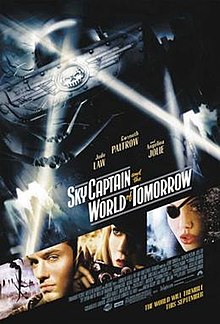
The Jetsons is an American animated sitcom produced by Hanna-Barbera Productions. It originally aired in prime time from September 23, 1962, to March 17, 1963, on ABC, then later aired in reruns via syndication, with new episodes produced from 1985 to 1987. It was Hanna-Barbera's Space Age counterpart to The Flintstones.

Henry Albert Azaria, known professionally as Hank Azaria, is an American actor, comedian, and producer. He is known for voicing many characters in the long-running animated sitcom The Simpsons since 1989, most notably Moe Szyslak, Chief Wiggum, Comic Book Guy, Snake Jailbird, Professor Frink, and formerly Apu Nahasapeemapetilon, Lou, Carl Carlson, among others. Azaria joined the show with little voice acting experience, but became a regular in its second season. For his work on the show, he has won four Primetime Emmy Awards.

Castle in the Sky, also known as Laputa: Castle in the Sky, is a 1986 Japanese animated fantasy adventure film written and directed by Hayao Miyazaki. It was produced by Isao Takahata, animated by Studio Ghibli, and distributed by the Toei Company. In voice acting roles, the original Japanese version stars Mayumi Tanaka, Keiko Yokozawa, Kotoe Hatsui, and Minori Terada. The film follows orphans Sheeta and Pazu, who are pursued by government agent Muska, the army, and a group of pirates. They seek Sheeta's crystal necklace, the key to accessing Laputa, a legendary flying castle hosting advanced technology.

John Arthur Kennedy was an American stage and film actor known for his versatility in supporting film roles and his ability to create "an exceptional honesty and naturalness on stage", especially in the original casts of Arthur Miller plays on Broadway. He won the 1949 Tony Award for Best Featured Actor in a Play for Miller's Death of a Salesman. He also won the Golden Globe for Best Supporting Actor for the 1955 film Trial, and was a five-time Academy Award nominee.
Nicholas John Tate is an Australian actor popularly known for his roles as pilot Alan Carter in the 1970s science fiction television series Space: 1999, and James Hamilton in the 1980s Australian soap opera Sons and Daughters.
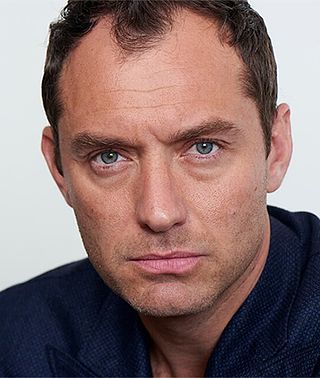
David Jude Heyworth Law is an English actor. He began his career in theatre before landing small roles in various British television productions and feature films, later gaining recognition for his role in Anthony Minghella's The Talented Mr. Ripley (1999), for which he won the BAFTA Award for Best Actor in a Supporting Role and was nominated for an Academy Award.

Casshern is a 2004 Japanese tokusatsu superhero film adaptation of the anime series of the same name, written, directed, shot and edited by Kazuaki Kiriya. It is one of only a few films released in the mid-2000's to be shot entirely on a "digital backlot".

Robert Martin Culp was an American actor and screenwriter widely known for his work in television. Culp earned an international reputation for his role as Kelly Robinson on I Spy (1965–1968), the espionage television series in which co-star Bill Cosby and he played secret agents. Before this, he starred in the CBS/Four Star Western series Trackdown as Texas Ranger Hoby Gilman in 71 episodes from 1957 to 1959. The 1980s brought him back to television as FBI Agent Bill Maxwell on The Greatest American Hero. Later, he had a recurring role as Warren Whelan on Everybody Loves Raymond, and was a voice actor for various computer games, including Half-Life 2. Culp gave hundreds of performances in a career spanning more than 50 years.
Kerry Scott Conran is an American film director and screenwriter, best known for creating and directing the 2004 pulp science fiction film Sky Captain and the World of Tomorrow.
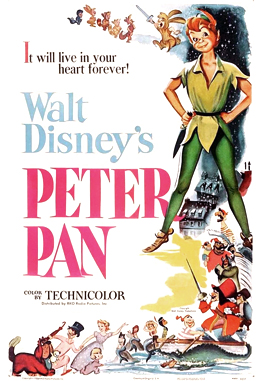
Peter Pan is a 1953 American animated adventure fantasy film produced in 1952 by Walt Disney Productions and released by RKO Radio Pictures. Based on J. M. Barrie's 1904 play Peter Pan, or the Boy Who Wouldn't Grow Up, the film was directed by Hamilton Luske, Clyde Geronimi, and Wilfred Jackson. Featuring the voices of Bobby Driscoll, Kathryn Beaumont, Hans Conried, and Bill Thompson, the film's plot follows Wendy Darling and her two brothers, who meet the never-growing-up Peter Pan and travel with him to the island of Never Land to stay young, where they also have to face Peter's archenemy, Captain Hook.

Meet the Robinsons is a 2007 American animated science-fiction comedy film produced by Walt Disney Animation Studios and released by Walt Disney Pictures. It is loosely based on the 1990 children's book A Day with Wilbur Robinson by William Joyce. The film was directed by Stephen J. Anderson and produced by Dorothy McKim, from a screenplay that Anderson co-wrote with Don Hall, Nathan Greno, Joe Mateo, Jon Bernstein, Michelle Spitz, and Aurian Redson. The film stars the voices of Daniel Hansen and Jordan Fry, Wesley Singerman, Angela Bassett, Tom Selleck, Harland Williams, Laurie Metcalf, Nicole Sullivan, Adam West, Ethan Sandler, Tom Kenny, and Anderson. It follows an orphaned 12-year-old inventor, Lewis, who is desperate to be adopted. He meets Wilbur, a young time-traveler who takes him to the year 2037 to visit an eccentric family, the Robinsons. They must prevent a mysterious bowler-hatted man from changing Lewis' fate, and, by proxy, the future.
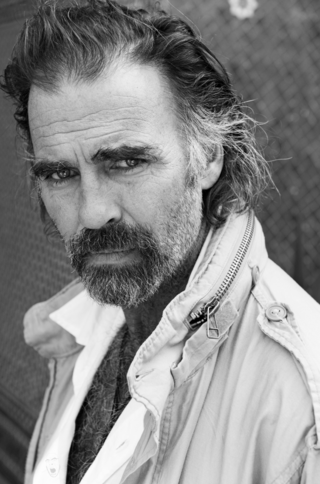
Jeffrey David Fahey is an American actor. His notable roles include Duane Duke in Psycho III (1986), Pete Verill in Clint Eastwood's White Hunter Black Heart (1990), Jobe Smith in The Lawnmower Man (1992), and Captain Frank Lapidus on the ABC series Lost (2008–2010). He is also known for his collaborations with director Robert Rodriguez, appearing in his films Planet Terror (2007), Machete (2010), and Alita: Battle Angel (2019).
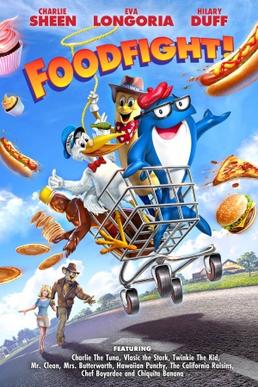
Foodfight! is a 2012 American animated adventure comedy film produced by Threshold Entertainment and directed by Lawrence Kasanoff. The film features the voices of Charlie Sheen, Wayne Brady, Hilary Duff, Eva Longoria, Larry Miller, and Christopher Lloyd. Foodfight! takes place in the "Marketropolis" supermarket, which, after closing time, transforms into a city inhabited by "Ikes", personifications of well-known food mascots. The story follows a cereal brand mascot, Dex Dogtective, who, along with his best friend Daredevil Dan, join forces with their fellow "Ikes" to fight against the forces of the evil Brand X, who threaten to take over the entire supermarket.

Pulse is a 2006 American horror film written by Wes Craven and Ray Wright, and directed by Jim Sonzero. It is a remake of Kiyoshi Kurosawa's 2001 Japanese horror film Kairo. The film stars Kristen Bell, Ian Somerhalder and Christina Milian. The film spawned two straight-to-DVD sequels: Pulse 2: Afterlife and Pulse 3, both released in 2008.
The 9th Golden Satellite Awards, honoring the best in film and television of 2004, were presented by the International Press Academy on January 23, 2005.
The 8th Online Film Critics Society Awards, honoring the best in filmmaking in 2004, were given on 10 January 2005.
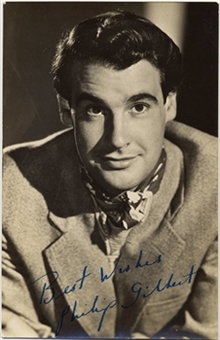
Philip Gilbert was a Canadian actor.

The Haunted World of El Superbeasto is a 2009 American adult animated superhero comedy film directed, co-written and co-produced by Rob Zombie. The film was written by Zombie and Tom Papa from Zombie's comic book series of the same name. The film was also produced by Starz Media and Film Roman, with animation provided by Carbunkle Cartoons and Big Star Productions.

The Mechanical Monsters (1941) is the second of seventeen animated Technicolor short films based upon the DC Comics character Superman. Produced by Fleischer Studios, the story features Superman battling a mad scientist and his army of robots. It was originally released by Paramount Pictures on November 28, 1941.
